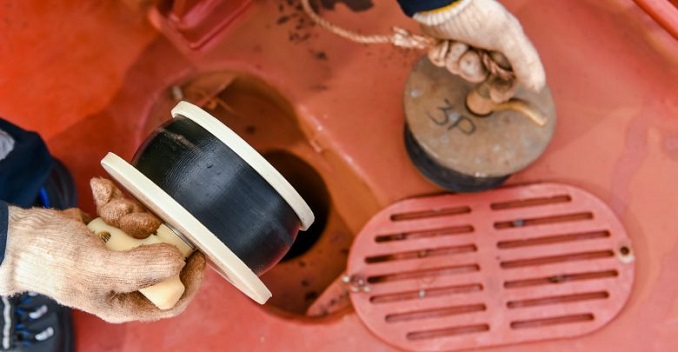Last year, Nora Toure made a very interesting talk on the impact of 3D printing on the global supply chain. The topic was a prescient one, given the events to come in 2020. In turn, I have interviewed Toure about how the topic has evolved since the COVID-19 pandemic.
It’s been a year since you last gave your talk on how 3D printing will disrupt the global supply chain. Can you give a review of the supply chain and 3D printing between that talk and now?
A lot has happened since then, as far as implementing Ivaldi Group’s distributed manufacturing solution! Since my TEDx talk on disrupting supply chains with additive manufacturing, we’ve delivered the world’s first maritime spare parts on merchant vessels, we continued digitizing, optimizing and reviewing performance of thousands of spare parts, not only in maritime, but also in automotive, construction and mining.
I believe the adoption of additive manufacturing in supply chains optimization will be boosted in the next few months as heavy industries will go back to business and recover from the COVID-19 pandemic. The potential of additive manufacturing goes beyond technical comparison between materials and manufacturing process. Shipping, warehousing, procurement, CO2 emissions, downtime are all savings that need to be taken into account when comparing current supply chain models to distributed manufacturing enhanced supply chains.
We have experienced COVID-19 the world over and it has almost completely changed the way we have been doing things. Have you noticed an impact on 3D printing in the global supply chain, particular as a disruptive technology?
As much as I’d rather COVID-19 wasn’t our new reality, I have to admit I’ve been impressed by our additive manufacturing community. It’s fantastic to see how we’ve organized ourselves in such a short amount of time. What strikes me the most is how fast individuals, but also companies of various sizes organize themselves and build their own supply chains, from designing and testing, producing, sanitizing and getting the PPE to the hospitals.
I see disruption of supply chains on two levels:
Simplification of supply chains, with a more limited number of intermediaries and a collaborative approach in product sourcing and design are leading to efficient supply chains, even when triggered by individuals,
Removing shipping from supply chains and focusing on sending files rather than physical products is not only fastening the entire process and saving on CO2 emissions, it’s also now proven that it’s improving efficiency all over
Interestingly, you are the founder and president of Women in 3D Printing. What role is your organization playing in 3D printing in the global supply chain, if any?
Since we do not provide parts nor any technology service, it was a bit challenging to see how we could contribute in manufacturing [personal protection equipment]. I was involved on a personal level in some local initiatives, but I wanted to keep Wi3DP agnostic because, again, we don’t have a full-time team nor employees we could dedicate to any project.
That being said, being a large community, we get information. So, our contribution has been to provide a directory of those 3D printing responses.
But I have to say, I am impressed with the work our ambassadors have done during this time, as many of them have been involved with local 3D printing responses to COVID-19.
How do you view the impact of 3D printing in the supply chain for developing nations, particularly in Africa?
Wherever supply chains aren’t fully developed and established, I believe there is an opportunity to adopt distributed manufacturing solutions sooner and implement those strategies faster.
Organizations such as 3DAfrica are doing a great job at enabling local businesses adopting 3D printing. This could be taken a step further with corporates adopting the technology as well.
What is your financial outlook for 3D printing in the supply chain in the next five years, especially after the effects of COVID-19. Do you see a rise in financial growth for 3D printing services in the supply chain or a drop?
The savings enabled by on-demand distributed manufacturing, enabled by 3D printing services, are so big and are impacting, from a financial point of view, more than unit parts cost comparison. The impact is the entire supply chain—on warehousing, shipping, delivery etc.—that it just makes sense to switch some of the traditionally sourced spare parts to additive manufacturing.
Subscribe to Our Email Newsletter
Stay up-to-date on all the latest news from the 3D printing industry and receive information and offers from third party vendors.
You May Also Like
Gorilla Sports GE’s First 3D Printed Titanium Cast
How do you help a gorilla with a broken arm? Sounds like the start of a bad joke a zookeeper might tell, but it’s an actual dilemma recently faced by...
Nylon 3D Printed Parts Made More Functional with Coatings & Colors
Parts 3D printed from polyamide (PA, Nylon) 12 using powder bed fusion (PBF) are a mainstay in the additive manufacturing (AM) industry. While post-finishing processes have improved the porosity of...
$25M to Back Sintavia’s Largest Expansion of Metal 3D Printing Capacity Since 2019
Sintavia, the digital manufacturing company specializing in mission-critical parts for strategic sectors, announced a $25 million investment to increase its production capacity, the largest expansion to its operations since 2019....
Velo3D Initiates Public Offering in a Bid to Strengthen Financial Foundations and Drive Future Growth
Velo3D (NYSE: VLD) has been among a number of publicly traded 3D printing firms that have attempted to weather the current macroeconomic climate. After posting a challenging financial report for 2023,...


































